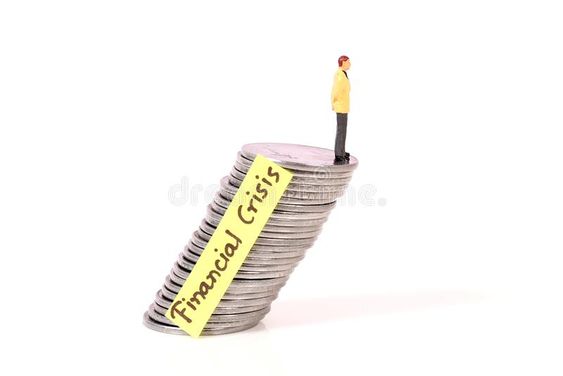Santiago F. Dumlao Jr. l June 18, 2024 l Business Mirror

IT is informative to recall the Asian Financial Crisis (ACF) which by common reckoning started with the devaluation of the Thai baht on July 2, 1997.
This article celebrates the 27th anniversary of the event by way of reminding ourselves of the pitfalls and to mind the guardrails.
In those years between the mid-1960s and 1990s, there were those so-called “tiger economies” which were enjoying commendable growth of an average 6 percent-8 percent: South Korea, Taiwan, Hongkong, Singapore, Indonesia, Malaysia and Thailand. The Philippines was not in the league but was striving to be, with its 1.0 GDP growth rate in 1981-90 (ADB Outlook).
So what happened? The common story is that Thailand had over-borrowed US dollars short-term and, through its financial system, re-lent to domestic companies long-term in baht. There was a double mismatch, in maturities and currencies, so that when the baht was devalued, the borrowers were squeezed to pay more baht for dollar obligations, causing tremendous losses and bankruptcies. Those who suffered were banks and financial companies and most everybody else.
While Thailand was reporting tremendous export growth averaging 18.8 percent in 1990-95, and budget surpluses too, there were quick developments in 1996. The country’s exports nosedived to just 0.1 percent vs. 22.2 percent-24.5 percent in 1994 and 1995.its foreign debt bloated to USD 80 billion. Its current account deficit widened. The pressure to service external debt grew to be a heavy imminent burden.
A lot of foreign money flowed into Thailand which led to a spree in local investments, a major part in real estate and property development. But there was over-lending and over-investment in unprofitable ventures.
Meanwhile, currency speculators started to attack the baht. The Bank of Thailand fought back, but it had reportedly only $37.2 billion in reserves in December 1996 as against $10 billion which a group of speculators had reportedly accumulated to “bet” against the baht. (Lawrence Au, 2016, “Asia’s Financial Industry 1986-2016.” Yoncoxton Publications, p. 69)
Thailand was forced to devalue the baht.
Before the crisis, the Thai baht was trading at 26 to the dollar; by end 1997 it had dropped to 53 to the dollar, over 100-percent loss in value. The Indonesian rupiah was trading at 2,400 to the dollar in June 1997; it was 14,900 to the dollar in June 1998. The South Korean won was trading at 900 to the dollar; it was 1,695 by June 1997. (Investopedia) The Malaysian ringgit was trading at 2.51 to the dollar in June 1997; it was 3.89 by December 1997.
The Philippine peso was trading at 26.40 to the dollar in June 1997; this rate deteriorated to 42.7 by January 1998. (There was some attempt by the Philippines to defend the exchange rate but there was not enough foreign exchange to sustain such defense, so the rate was allowed to float freely. Gabby Singson was BSP Governor and Bobby de Ocampo was Finance Secretary. Fidel V. Ramos was president.)
The crisis contagion reflected in the catastrophic movement of exchange rates can only inflict oppressive consequences to East Asia’s and Southeast Asia’s economies. The IMF and World Bank came to the rescue with emergency loans tied with restrictive conditions and onerous prescriptions.
One big lesson from the AFC is the continuing need for financial resilience grounded on strong macroeconomic fundamentals. Beyond this is the essentiality of a deep and broad capital market which supports resiliency of the economy, more specifically, to balance the over-reliance on bank financing for economic growth.
Commenting on the Asian crisis, then US Federal Reserve chairman Alan Greenspan remarked:
“Our heavy reliance on bank financing works – until it doesn’t. This leads us to wonder how severe East Asia’s problems would have been… had those economies not relied so heavily on banks as their means of financial intermediation… Had a functioning capital market existed, the outcome might well have been far more benign.” (October 1999, Sea Island, Georgia)
As a collective response to the AFC, the ASEAN+3 Asian Bond Markets Initiative (ABMI) was launched in December 2002 by the ASEAN countries and Peoples Republic of China, Japan and the Republic of Korea. The purpose: “to develop local currency (LCY) bond markets as an alternative source of funding to foreign-currency-denominated bank loans to minimize the currency and maturity mismatch that had made the region vulnerable to the sudden reverse of capital inflows… also aimed to promote regional financial cooperation and integration under ABMI.” (Asian Regional Integration Center blog) The ADB acts as ABMI’s secretariat.
In 2002 likewise, the Association of Credit Rating Agencies in Asia (ACRAA) was organized as the first and only Asian industry association to promote the credit ratings discipline in Asia’s financial markets, in support of domestic bond issuances. ACRAA’s secretariat is also based in Manila.
In the Philippines, the Capital Market Development Council (CMDC) is the government-private sector body that officially shepherds our capital market development BLUEPRINT. CMDC is chaired by the Secretary of Finance, and co-chaired by the SEC chairman Emilio B. Aquino and by a FINEX representative currently Atty. Francis Ed. Lim. It is CMDC that should take the lead in reiterating the lessons from the Asian Financial Crisis.
I end this narrative by highlighting the perceptive observation of business authors/journalists Mark L. Clifford and Pete Engardio in their book ‘MELTDOWN. Asia’s Boom, Bust, and Beyond”. (2000)
“Now they must make their financial system as solid as possible. They also need to speed up efforts to broaden their domestic capital markets so that policymakers are better able to heed off bubbes using monetary policy and corporations are less dependent on banks for raising long-term funds. For starters, that means establishing markets for the secondary trading of long-term bonds, something government talked about but did little to implement before the crisis.”
The views and opinions expressed above are those of the author and do not necessarily represent the views of FINEX. Photo from Pinterest.

